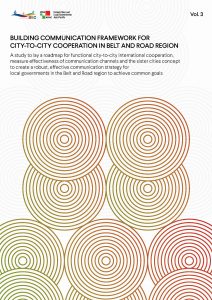Cities and towns globally face a variety of challenges—some of these are unique, and a lot of them are common. Therefore, the need for effectual cooperation and knowledge sharing among cities and local governments has become essential than ever to deal with complex and emergent urban issues.
In ancient times, cities have been the seats of power and wielded administrative and financial authority for many centuries. Cities used to converse with other cities on international or trade issues. But, over the years, beginning in the 18th century, nation-states gradually became strong. And, the role of cities in international cooperation reduced to a minimum. With urbanisation picking pace in the developed countries in the 20th century, decentralised cooperation emerged. In the early years of the 20th century, one of the first associations of intercity cooperation was established in 1913. According to the report released by the World Associations of Cities and Local Authorities Coordination (WACLAC) in 2001, the association enabled general information exchange and mutual support. It was also a platform for cities to discuss local issues with their peers in different countries and find solutions.
Most peer-to-peer connections were developed in developed countries in the early years of city-to-city communication and collaboration connections. Later, many developing countries too joined the bandwagon and benefitted from decentralised cooperation between foreign cities. For instance, Hangzhou city established its first sister city connection at the municipal level with Gifu city of Japan in 1979. Since then, it has established over 30 sister city associations with cities from several countries. This report will provide an insight into the experiences of Hangzhou city and the benefits of such associations.
Local Government Associations also played a crucial role in establishing connections between cities for mutual benefit. United Cities and Local Governments Asia Pacific (UCLG ASPAC) has consistently improved communication among local governments and enabled collaboration between local governments to leverage collective knowledge and resources of LGs in the Asia Pacific. UCLG ASPAC has been among the pioneers in institutionalizingBuilding Communication Framework for City-to-City Cooperation in Belt and Road RegionBuilding Communication Framework for City-to-City Cooperation in Belt and Road Region strategic partnerships with local governments and national municipal associations to benefit LGs in the region. To augment cooperation and strengthen communication among the member cities, UCLG ASPAC also constituted a committee, namely ‘Belt and Road Local Cooperation’, through which over 80 members are connected in the Belt and Road Region.
Link: BRLC Final_Vol 3

